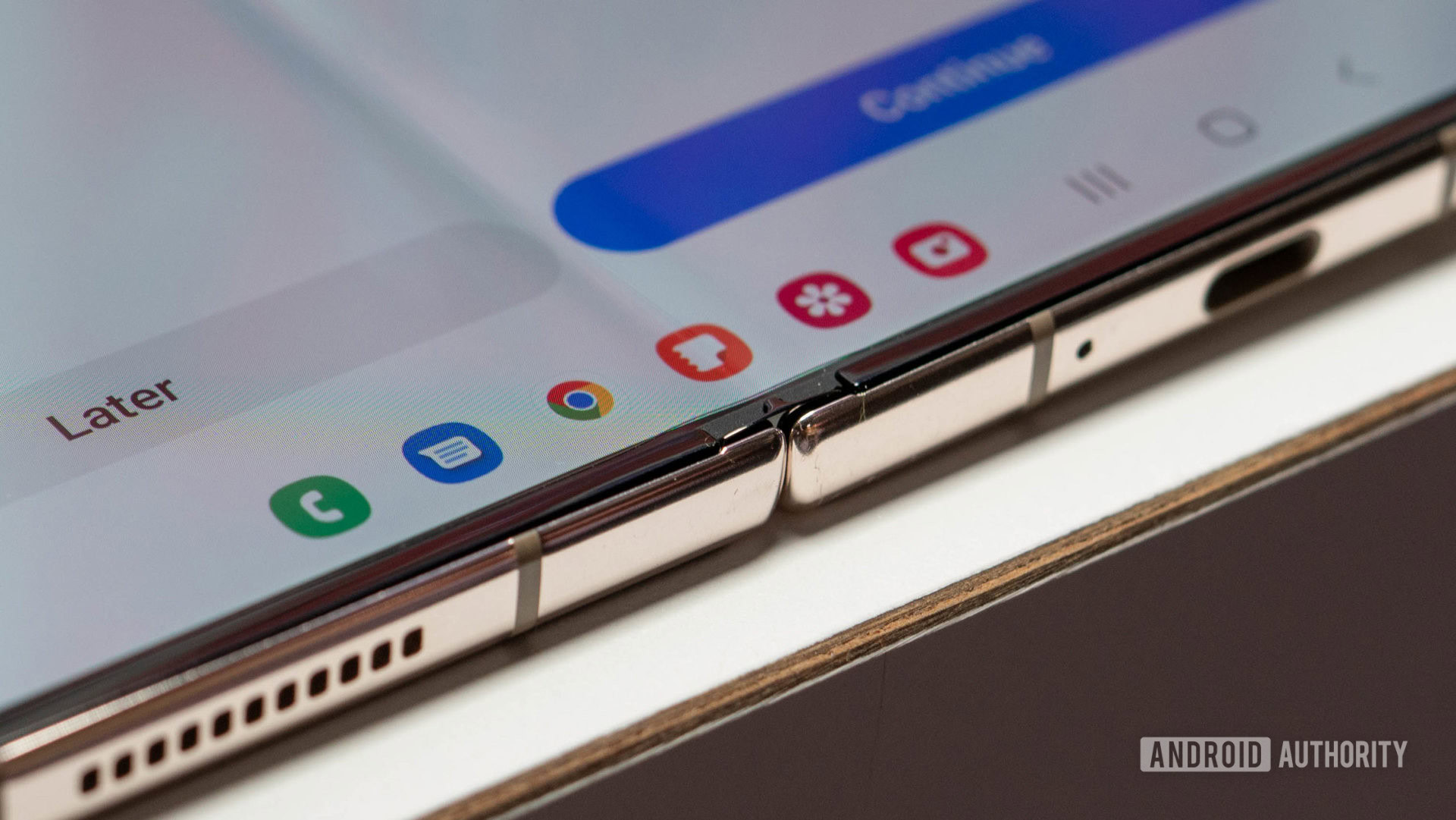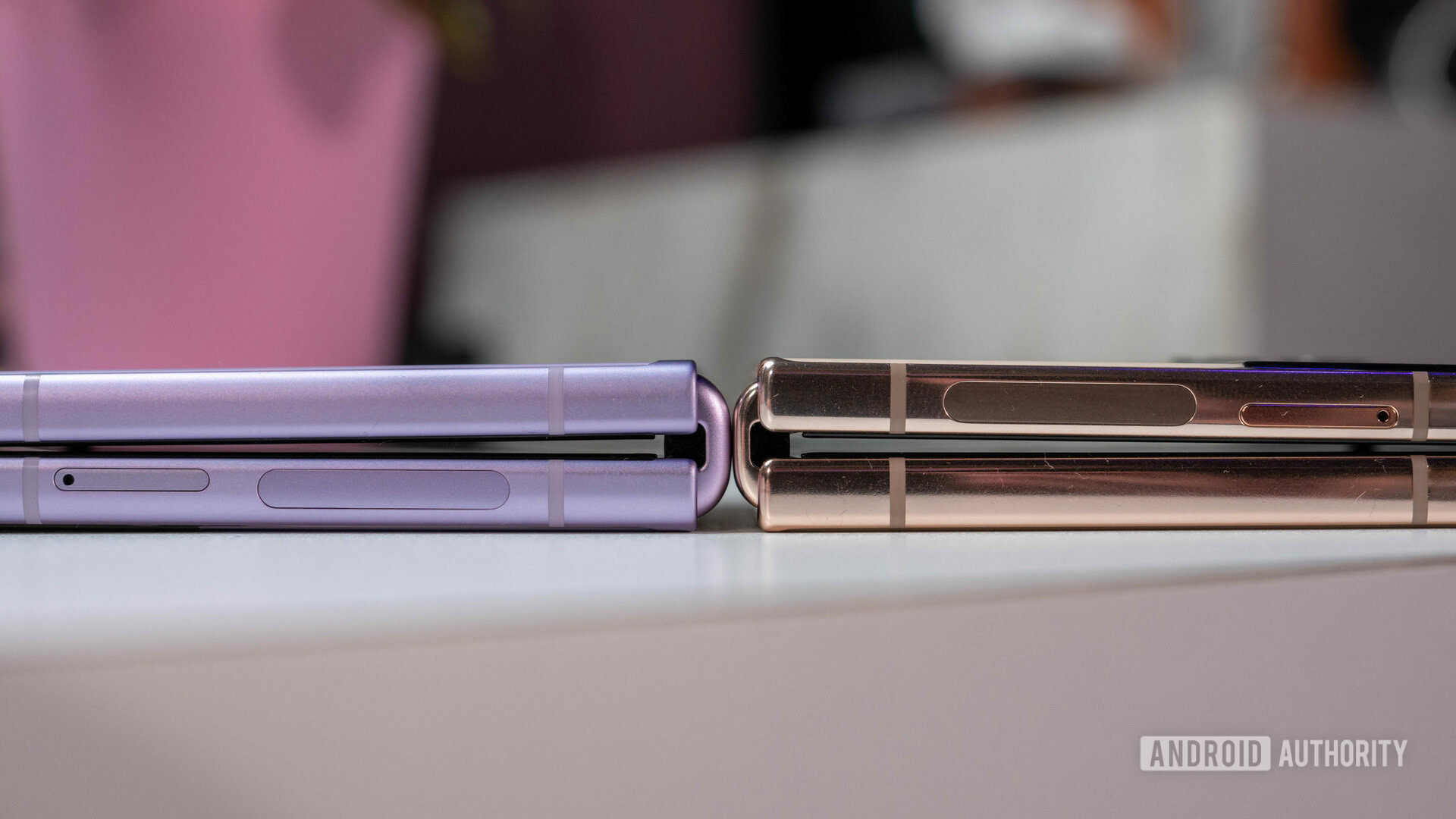Affiliate links on Android Authority may earn us a commission. Learn more.
Don't fret foldable fragility, everything will be fine... probably
Published onAugust 18, 2022

I’m sure you’re all familiar with the horror stories from early foldable smartphones — the dirt-magnet hinges, easily damageable screens, and Samsung’s essential yet temptingly peelable screen protector. It seems like a lot can go wrong with a foldable, more so than a regular smartphone. After all, there are a lot more moving parts, and I’m sure it’s been enough to put some potential customers off a purchase. I’ve certainly been in that camp.
I was even a little bit apprehensive about getting my hands on the new Z Flip 4 and Z Fold 4. Would Samsung kick me out of the venue if they happened to fall apart in my hands?
Thankfully my fears have been assuaged after some hands-on time with a few recent foldy phones. The latest Galaxy foldables, in particular, feel every bit as robust as a regular handset. It’s not just Samsung’s foldables; we’ve been pretty content with the feel in the hands of the recent OPPO Find N and the HUAWEI Mate XS 2 as well.
Much to my surprise, modern foldables feel surprisingly sturdy in hand.
Build materials will be instantly familiar to anyone who’s spent time with a flagship handset in the past few years. Metal frames and protective glass backs are just as commonplace here as they are across the rest of the premium market, providing a familiarly robust feel in hand. For example, the latest Galaxy Z Fold 4 sports an even stronger and lighter armor aluminum frame than its predecessor, so the situation is continually improving.

Two hundred thousand fold-rated displays are now the norm too. That’s enough to last many more years after these phones have seen their last software update, bringing peace of mind that they’re in it for the long haul. You’ll even find an IP rating on some foldable smartphones; however, dust resistance is understandably more elusive due to the hinge mechanisms. Needless to say, the on-paper specifications are increasingly robust and should allay fears that foldables are flimsy by definition.
That isn’t to say there aren’t extra issues to consider with a foldable phone. Dirt and grit getting into the hinge and behind the display can be a cause for concern, albeit not as large a one as you might dread. Likewise, HUAWEI, Samsung, and others, still require a protective film on their handsets to protect the display and ensure it works correctly, which you won’t want to damage. There are still reports of customers having issues in these regards floating around in various corners of the internet, but it’s difficult to tell if these are outliers or a more typical experience. You’ll certainly want to be a little more cautious when using these phones in grubbier conditions, but on the day-to-day, I’m not any more concerned about damaging a foldable than I am about any other phone.
Insurance and care packages for foldables offer extra peace of mind against accidents.
If you’re still on the fence, there are plenty of great first and third-party foldable cases available. Samsung also offers a Care Plus package that covers drops, spills, cracked screens, and mechanical failures, with a next business day replacement promise for $149 for two years. Samsung has just lowered the cost of its screen replacement deductible too. It’s still not exactly cheap, but there’s added peace of mind available for a price, should you want it. Unfortunately, additional insurance options aren’t available in every market, which certainly makes it more difficult to take the plunge, though third-party gadget coverage is always an option.
If you’ve been on the fence due to foldable fragility fears, it’s time to let them go; these phones are indeed built solidly enough to be worth indulging.

Large internal display
Long-term software support
